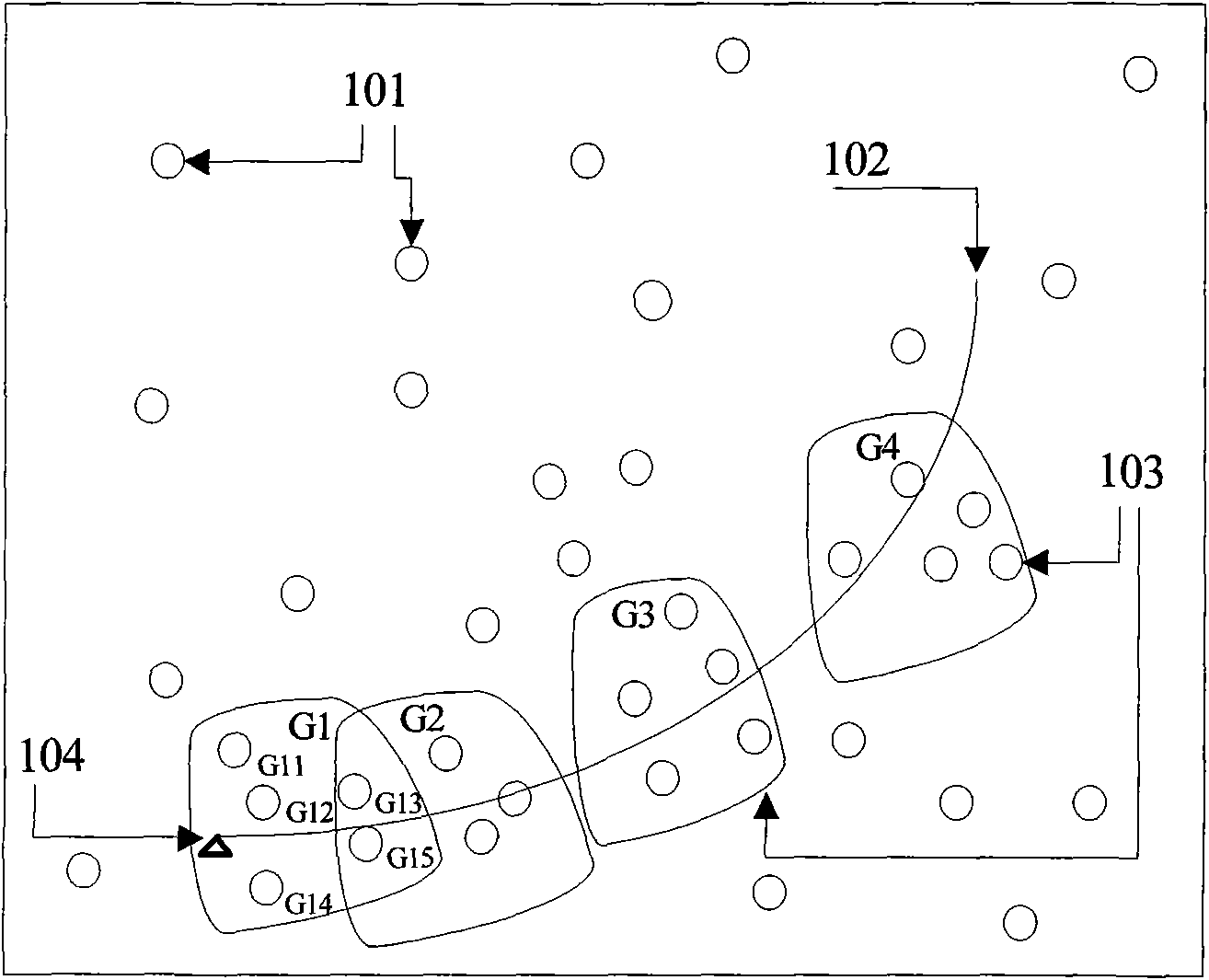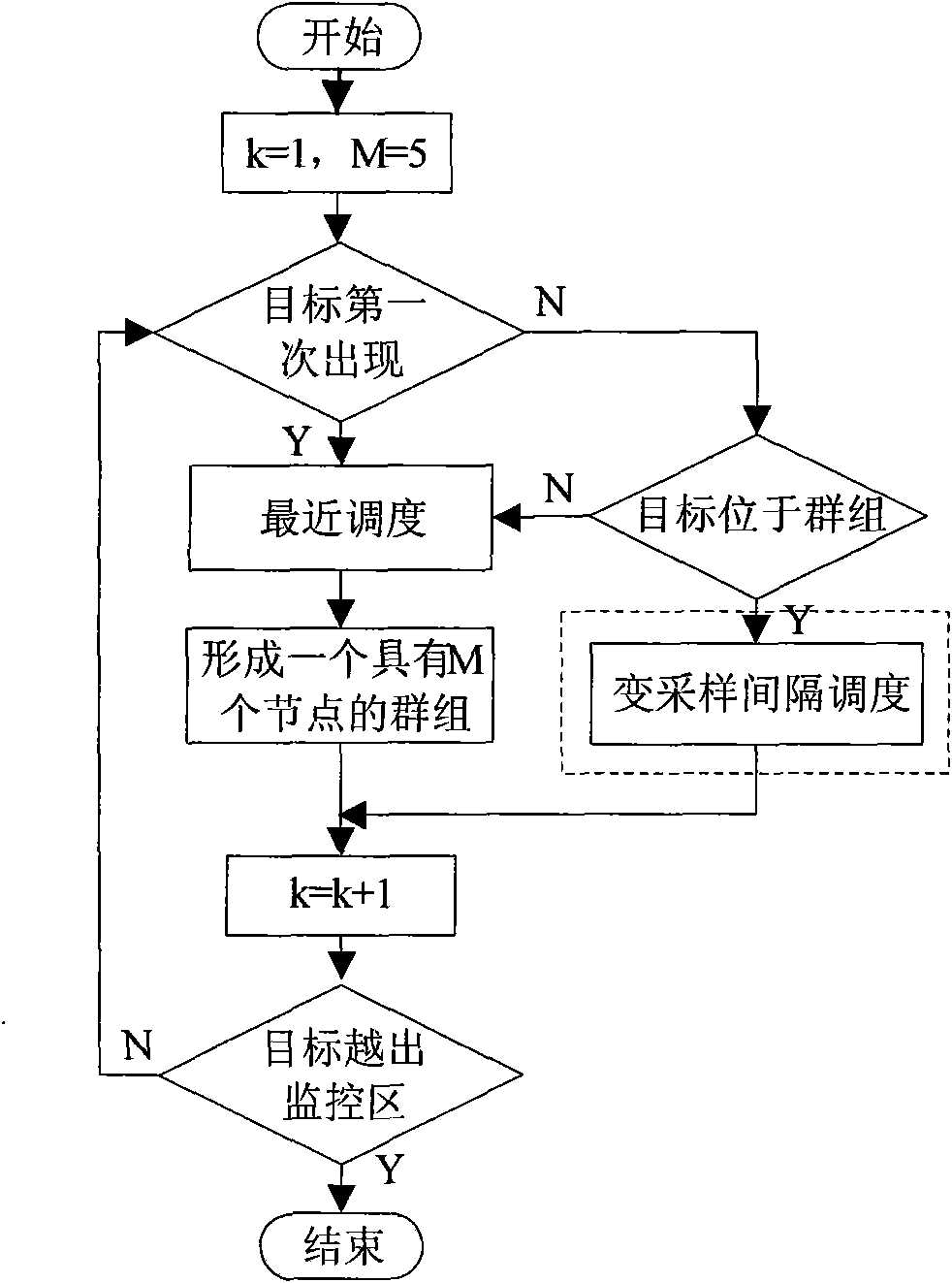Dynamic group scheduling method based on wireless sensor network
A wireless sensor and scheduling method technology, applied in network topology, wireless communication, radio wave measurement system, etc., can solve the real-time requirements without considering the limited resources of sensor nodes, without considering the requirements of energy, without limiting the sensor Scheduling scope, etc.
- Summary
- Abstract
- Description
- Claims
- Application Information
AI Technical Summary
Problems solved by technology
Method used
Image
Examples
Embodiment Construction
[0028] The present invention will be further introduced below in conjunction with the accompanying drawings and specific application examples, but the implementation of the present invention is not limited thereto. The dynamic group scheduling method based on wireless sensor network mainly includes the following steps:
[0029] The first step: use KF / EKF to predict the position and velocity of the target
[0030] The target has just entered the wireless sensor network (such as figure 1 104), the sensor node closest to the moving target (such as figure 1 101) is awakened as a task node to track the moving target. The main task of this step is to predict the position and velocity of the moving target, which can be tracked by using KF / EKF, IMM-KF, IMM-EKF, IMM-UKF or PF methods The trajectory of the moving target, such as figure 1 102, Figure 4 Using the EKF algorithm, Figure 5 The IMM-EKF algorithm is used to track the moving target.
[0031] The specific implementation ...
PUM
 Login to View More
Login to View More Abstract
Description
Claims
Application Information
 Login to View More
Login to View More - R&D
- Intellectual Property
- Life Sciences
- Materials
- Tech Scout
- Unparalleled Data Quality
- Higher Quality Content
- 60% Fewer Hallucinations
Browse by: Latest US Patents, China's latest patents, Technical Efficacy Thesaurus, Application Domain, Technology Topic, Popular Technical Reports.
© 2025 PatSnap. All rights reserved.Legal|Privacy policy|Modern Slavery Act Transparency Statement|Sitemap|About US| Contact US: help@patsnap.com



